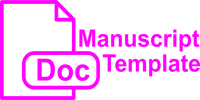MAIN MENU
Pengaruh Pemberian Tehnik Sitz Bath Terhadap Tingkat Nyeri Luka Perineum Pada Ibu Nifas
Abstract
Keywords
Full Text:
PDF (Bahasa Indonesia)References
Azu, T.D. et al. (2024) ‘Prevalence and predictors of episiotomy among puerperal women accessing postnatal care in the Kumasi Metropolis’, BMC Pregnancy and Childbirth, 24(1). Available at: https://doi.org/10.1186/s12884-024-06967-1.
Djusad, S. et al. (2024) ‘Analysis of episiotomy incidence and risk factors in vaginal deliveries: a single-center’, AJOG Global Reports, 4(3). Available at: https://doi.org/10.1016/j.xagr.2024.100371.
East, C.E. et al. (2020) ‘Local cooling for relieving pain from perineal trauma sustained during childbirth’, Cochrane Database of Systematic Reviews, 2020(10). Available at: https://doi.org/10.1002/14651858.CD006304.pub4.
Edqvist, M. et al. (2024) ‘Postpartum perineal pain and its association with sub-classified second-degree tears and perineal trauma—A follow-up of a randomized controlled trial’, Acta Obstetricia et Gynecologica Scandinavica [Preprint]. Available at: https://doi.org/10.1111/aogs.14938.
Kapoor, J. (2018) ‘A comparative study to assess the effectiveness of medicated and non-medicated sitz bath on episiotomy wound healing among postnatal mothers at govt. Smgs maternity hospital, Jammu (J&K)’, International Journal of Pregnancy & Child Birth, 4(2). Available at: https://doi.org/10.15406/ipcb.2018.04.00090.
Melvia Girsang, B. et al. (2019) ‘Gambaran Karakteristik Luka Perineum Pada Ibu Post Partum Dengan Hidroterapi Sitz Bath’, Jurnal Keperawatan Respati Yogyakarta, 6(3), pp. 666–671. Available at: http://nursingjurnal.respati.ac.id/index.php/JKRY/index.
Meo, M.L.N. (2020) ‘Antepartum Perineal Massages is Effective to Prevent Intrapartum Perineal Rupture’, Indonesian Journal of Obstetricians and Gynecologists, 8(5), pp. 258–261. Available at: https://doi.org/https://doi.org/10.32771/inajog.v8i4.1156.
Molyneux, R., Fowler, G. and Slade, P. (2022) ‘The effects of perineal trauma on immediate self-reported birth experience in first-time mothers’, Journal of Psychosomatic Obstetrics and Gynecology, 43(2), pp. 228–234. Available at: https://doi.org/10.1080/0167482X.2021.1923689.
Nori, W. et al. (2023) ‘Non-Pharmacological Pain Management in Labor: A Systematic Review’, Journal of Clinical Medicine. Multidisciplinary Digital Publishing Institute (MDPI). Available at: https://doi.org/10.3390/jcm12237203.
Ononuju, C. et al. (2020) ‘Review of episiotomy and the effect of its risk factors on postepisiotomy complications at the University of Port Harcourt Teaching Hospital’, Nigerian Medical Journal, 61(2), p. 96. Available at: https://doi.org/10.4103/nmj.nmj_121_19.
Opondo, C. et al. (2023) ‘The relationship between perineal trauma and postpartum psychological outcomes: a secondary analysis of a population-based survey’, BMC Pregnancy and Childbirth, 23(1). Available at: https://doi.org/10.1186/s12884-023-05950-6.
Pangastuti, N. (2014) Robekan Perineum pada Persalinan Vaginal di Bidan Praktek Swasta (BPS) Daerah Istimewa Yogyakarta Indonesia Tahun.
Ramesh, S. et al. (2024) ‘Effects of Far Infrared Radiation and Sitz Bath on Perineal Wound Healing and Pain in Primiparous Women Undergoing an Episiotomy: A Randomized Prospective Parallel Arm Study’, Cureus [Preprint]. Available at: https://doi.org/10.7759/cureus.67477.
Rohmin, A. et al. (2017) ‘Faktor Risiko yang Mempengaruhi Lama Penyembuhan Luka Perineum pada Ibu Post Partum’, Jurnal Kesehatan, VIII, pp. 449–454.
Sabila, R., Putra, H.K. and Inggarsih, R. (2022) ‘Characteristics Of Stress Urinary Incontinence (SUI) Patients In Dr. Mohammad Hoesin General Hospital On 2019 To 2021’, Biomedical Journal of Indonesia, 8(2), pp. 41–48. Available at: https://doi.org/10.32539/bji.v8i2.150.
Sun, R. et al. (2024) ‘Effects of Perineal Warm Compresses during the Second Stage of Labor on Reducing Perineal Trauma and Relieving Postpartum Perineal Pain in Primiparous Women: A Systematic Review and Meta-Analyses’, Healthcare (Switzerland). Multidisciplinary Digital Publishing Institute (MDPI). Available at: https://doi.org/10.3390/healthcare12070702.
WHO recommendations. Intrapartum care for a positive childbirth experience (2018). World Health Organization.
Wiseman, O. et al. (2019) ‘Infection and wound breakdown in spontaneous second-degree perineal tears: An exploratory mixed methods study’, Birth, 46(1), pp. 80–89. Available at: https://doi.org/10.1111/birt.12389.
Yamada, A. et al. (2024) ‘Impact of perineal pain and delivery related factors on interference with activities of daily living until 1 month postpartum: A longitudinal prospective study’, BMC Pregnancy and Childbirth, 24(1). Available at: https://doi.org/10.1186/s12884-024-06618-5.
DOI: https://doi.org/10.54444/jik.v15i1.161
Refbacks
- There are currently no refbacks.
Copyright (c) 2025 Mariyatul Qiftiyah, Nur Cholila

This work is licensed under a Creative Commons Attribution-ShareAlike 4.0 International License.
Indexed by:
Jurnal Ilmu Kebidanan (JIK)
Published by Lembaga Penelitian dan Pengabdian kepada Masyarakat (LPPM), Sekolah Tinggi Ilmu Kesehatan Adila Bandar Lampung
p-ISSN: 2088-9011 | e-ISSN: 2721-0839
STIKES ADILA
Mail : Jl. Soekarno Hatta No 110, Rajabasa, Kota Bandar Lampung
Telp : 082182486199
email: jurnalilmuk@gmail.com















